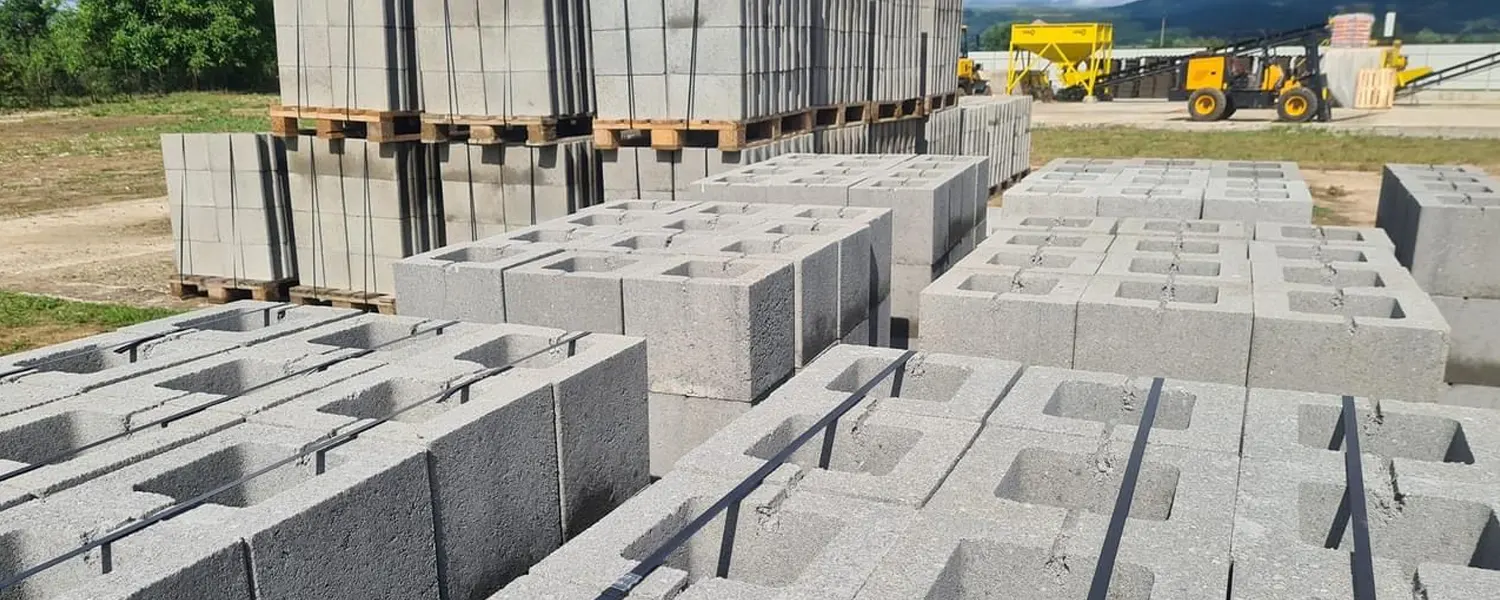Walk onto any construction site—whether it’s a residential project in Alwar or a commercial boundary wall and you’ll find concrete blocks at the heart of it all. These sturdy building components have steadily replaced traditional bricks due to one simple reason: they make construction faster, stronger, and more efficient. Whether you’re building a precast boundary wall, a compound wall, or a full-scale commercial facility, choosing the right type of concrete block is critical. Different blocks serve different purposes—from load-bearing to thermal insulation to aesthetic cladding.
Let’s break down the most common types of concrete blocks you’ll see on-site—and where each one fits best.
1. Solid Concrete Blocks
Best For: Load-bearing walls, foundations, precast walls
Solid concrete blocks are heavy, dense, and known for their high compressive strength. They are ideal for large-scale structural walls and RCC precast compound walls where durability and load-bearing capability are top priorities.
Why use it
Withstands heavy loads
Long lifespan
Excellent for external and internal walls
Use Case at Citadel Precast: We use solid blocks in our precast concrete wall panels to ensure each section has the strength to last decades, especially in seismic zones.
2. Hollow Concrete Blocks
Best For: Partition walls, boundary walls, sound insulation
These blocks have one or more hollow cores, making them lighter than solid blocks and easier to install. The air pockets also help with sound and thermal insulation.
3. Paver Blocks (Interlocking)
Best For: Walkways, driveways, exterior flooring
While not vertical wall components, paver blocks are still a staple on many construction sites. Their interlocking design makes them ideal for quickly creating patterned surfaces without the need for mortar.
Why use it
Aesthetic appeal
Reusable and easy to replace
Withstands vehicle and foot traffic
Citadel Precast focuses on vertical solutions like precast wall panels, while also installing pavers alongside compound walls to create cohesive landscaping.
4. Aerated Autoclaved Concrete (AAC) Blocks
Best For: Interior walls, multi-story buildings, lightweight construction
AAC blocks are extremely light yet surprisingly strong. They’re made with aluminum powder, fly ash, cement, and lime, giving them a unique cellular structure.
Why use it
Superior insulation
Faster construction
Fire and pest resistant
However, due to their lower load-bearing strength, they’re often not used for precast boundary wall systems or structural applications.
5. Decorative Concrete Blocks
Best For: Boundary walls, garden fences, ventilated partitions
These blocks add visual interest while allowing light and airflow. You’ve probably seen them in decorative precast concrete walls or compound walls where design and function go hand in hand.
Why use it
Aesthetic appeal
Natural ventilation
Lightweight
At Citadel Precast, we offer decorative precast wall panels as part of customized installations in Alwar and nearby areas.
Quick Comparison Table
| Type of Block | Weight | Strength | Best Used For | Used in Precast Walls? |
| Solid Concrete Blocks | Heavy | Very High | Load-bearing walls, foundations | ✔️ Yes |
| Hollow Concrete Blocks | Moderate | Moderate | Partition walls, insulation | ✔️ Yes |
| Paver Blocks (Interlocking) | Light | High (Surface) | Walkways, driveways | ❌ No |
| AAC Blocks | Very Light | Low to Moderate | Interior walls, insulation | ❌ No |
| Decorative Concrete Blocks | Light | Low to Moderate | Garden walls, ventilated spaces | ✔️ Yes (decorative) |
Why Choose Citadel Precast for Precast Concrete Walls?
When you install a precast concrete wall, you’re not just putting up a boundary—you’re investing in speed, strength, and safety. At Citadel Precast, we manufacture and install RCC precast compound walls, precast wall panels, and custom-designed solutions using the right type of concrete blocks for the right job.
Fast installation with expert handling
Earthquake-resistant designs
Long-lasting quality and low maintenance
